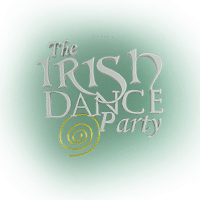A music and dancing lovers guide to Ireland

For music and dancing enthusiasts, Ireland offers a unique experience, deeply ingrained in the traditions of lively music and intricate dance forms. From the bustling streets of Dublin to the peaceful countryside, the love for music and dance is everywhere in Ireland. One of the best ways to introduce yourself to this vibrant culture is to be a part of events like the Irish Dance Party, offering a unique and interactive opportunity to experience traditional Irish music and dance. This guide will take you through the essentials of a musical and dance-filled journey through Ireland, starting with the Irish Dance Party and exploring other key musical and dancing hotspots around the country.
Exploring Dublin: music and dance hotspots
The Irish Dance Party is the cream of the crop when it comes to events staged in Dublin. It aims to initiate visitors to the pleasures of Irish music and dance. The event is tailor-made for those who want to experience first-hand the energetic and infectious spirit of traditional Irish culture.
What to Expect:
- Interactive Dance Lessons: Expert dancers take participants through basic steps of iconic Irish dances, such as the jig and the reel. Lessons are designed as fun and engaging, so it’s easy for beginners to join in.
- Live Music Performances: This is performed by accomplished musicians who play the traditional Irish instruments to create a lively, authentic atmosphere. The music ranges from fast-paced reels to soulful ballads, revealing the full scope of Irish music.
- Cultural stories and anecdotes: The musicians and dancers talk about the origins and significance of the dances and songs, to help understand the Irish culture in more depth.
Irish music is defined by its own unique instruments, each of which gives it a distinct sound in this experience:
- Fiddle: The fiddle is like a violin used in Irish music. Its lively and melodic tunes are important to traditional Irish sessions.
- Bodhrán: A traditional Irish frame drum on which many Irish tunes are founded and given rhythmic backing.
- Tin Whistle: This simple little instrument makes a clear, bright sound that is a signature part of Irish music.
- Uilleann Pipes: Famous for their sweet, haunting tone, these bagpipes are one of the defining features of Irish traditional music.
Beyond Dublin: music and dance across Ireland
While Dublin would be a great place to begin, there are plenty of other locations within the country that would yield similarly rich experiences in both music and dance. Each region has its distinctive musical practice and events to take in.
- Galway: Situated on the west coast of Ireland, Galway is often considered the country’s music capital. The city is famous for its lively pubs and street performances.
- Tigh Coili: This pub is famous for traditional music sessions and a warm atmosphere. Here, you can listen to the best musicians of Galway playing their instruments.
- The Crane Bar: Another hot spot for traditional music, live sessions happen every night at The Crane Bar. Performances in the upstairs venue are frequently very intimate affairs, hence an extraordinary listening experience.
Doolin: a village of music
The small village of Doolin in County Clare has been internationally recognized for its traditional Irish music. Doolin is small in size, but the reputation for its music is extremely significant.
- Gus O’Connor’s Pub: This place has been recognized for hosting traditional music sessions that have lasted for decades. That is where musicians and music lovers of the world come and experience the real sounds of Ireland.
- McGann’s Pub: This is another great venue for Doolin, with nightly music sessions performed in a cozy and warm setting.
County Clare: home of the real traditional Irish dance.
County Clare is not only famous for its music; it is also famous for its traditional Irish dance. The region is home to countless events and festivals that celebrate Irish dance.
- Willie Clancy Summer School: This is a week-long festival held annually in Miltown Malbay, celebrating traditional Irish music and dance. The festival is composed of workshops, lectures, and performances by some of the finest musicians and dancers in Ireland.
- Doolin Folk Festival: This summer festival hosts some of the best traditional musicians and dancers. This is a great time for live performances and dance workshops.
Learning Irish music and dance
But that doesn’t mean the fun stops there. For those who want to go more in-depth into the music and dance of Ireland, there are plenty of chances with which to learn from the best. In Ireland, there are literally numerous schools available in the country, teaching traditional Irish dance. Most schools cater to all levels, from beginners to advanced dancers.
The cultural significance of Irish music and dance
Irish music and dance are not just forms of entertainment; they are integral parts of Ireland’s cultural identity. They reflect the country’s history, struggles, and joys, and continue to evolve while staying rooted in tradition.
Music has always played an important role in Irish society for its role in storytelling and the preservation of history. Music was the Irish way of communicating who they were and their resilience under the yoke of oppression. Many of the traditional songs have coded messages or references to historical events, making them a central aspect of Ireland’s heritage.
For lovers of music and dancing, Ireland has a simply unparalleled cultural experience on offer. There are also festivals, workshops, and schools that offer opportunities to learn and engage in such arts. This makes sure that your journey across Ireland is full of information and entertainment. Whether you are a seasoned musician or dancer or merely a curious traveller, the vibrant culture in Ireland leaves you with truly unforgettable memories and a deeper appreciation for the music and dance that define this beautiful country.
